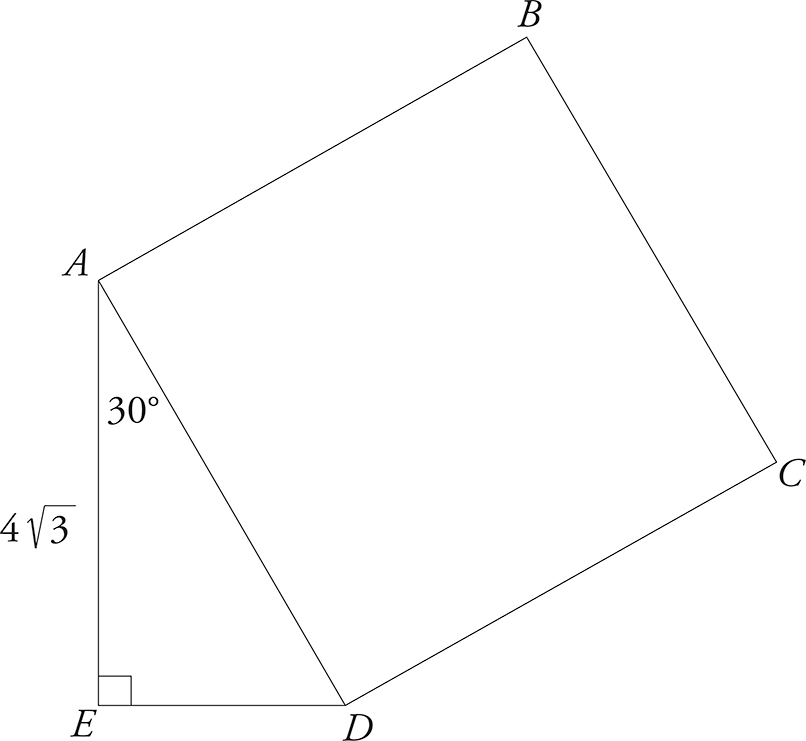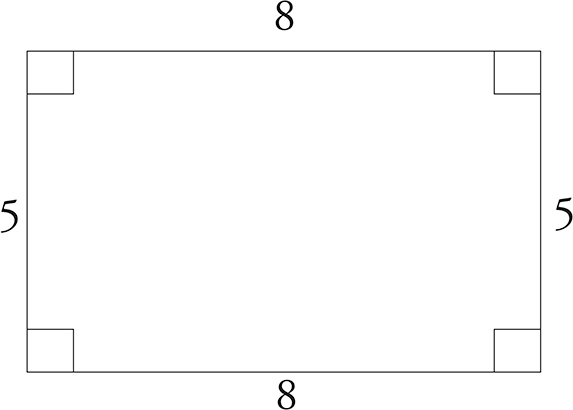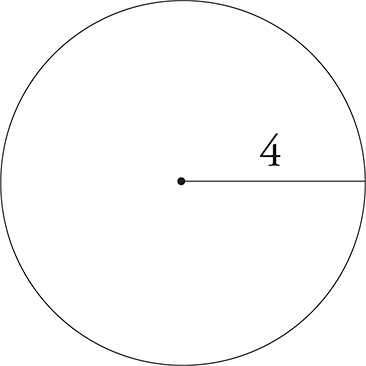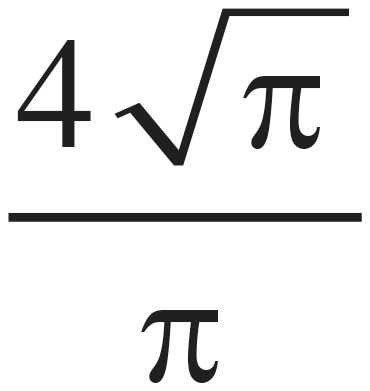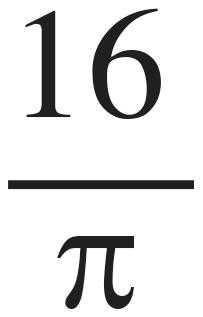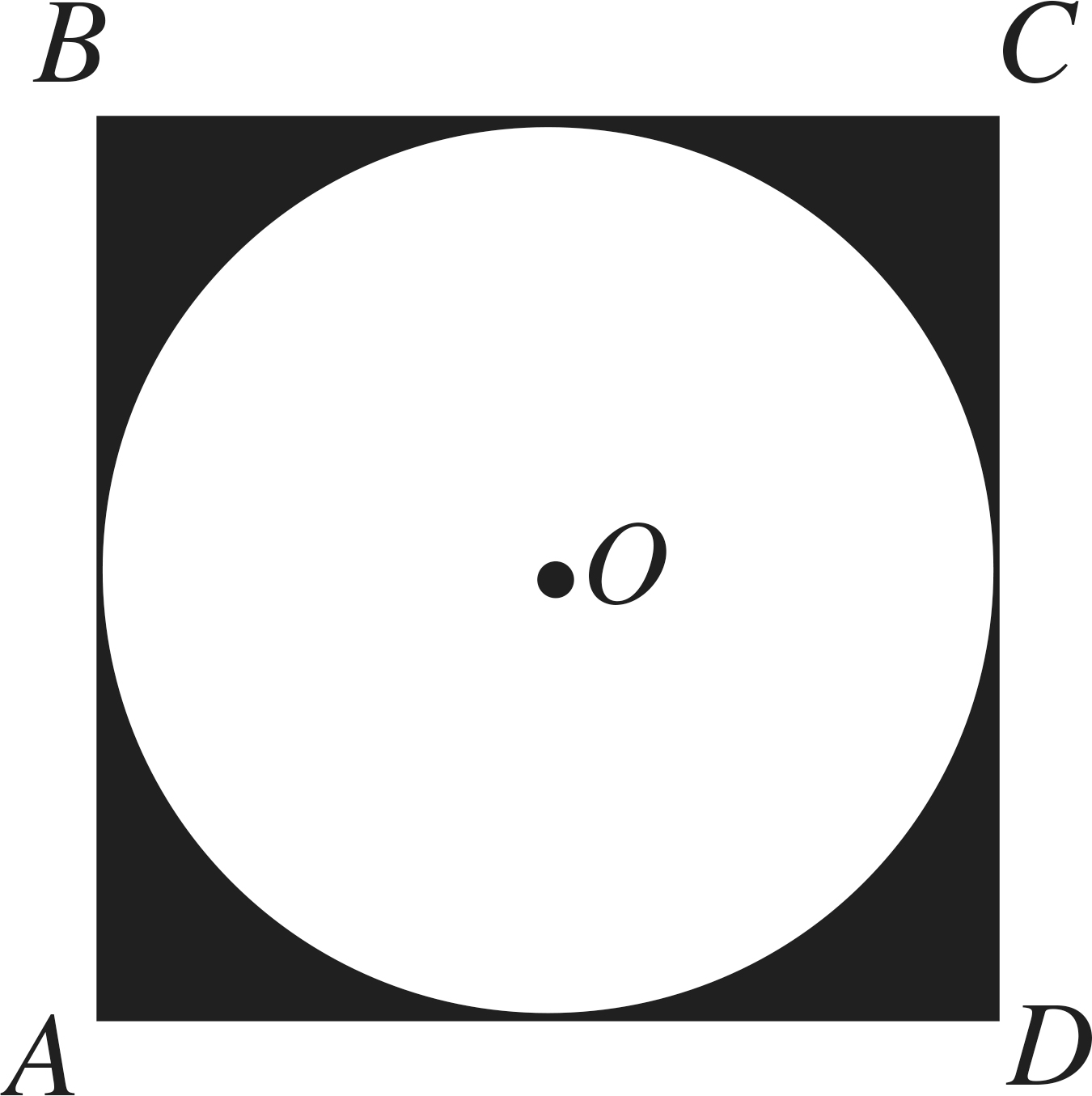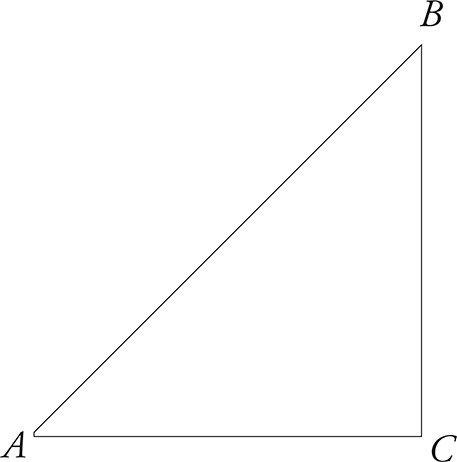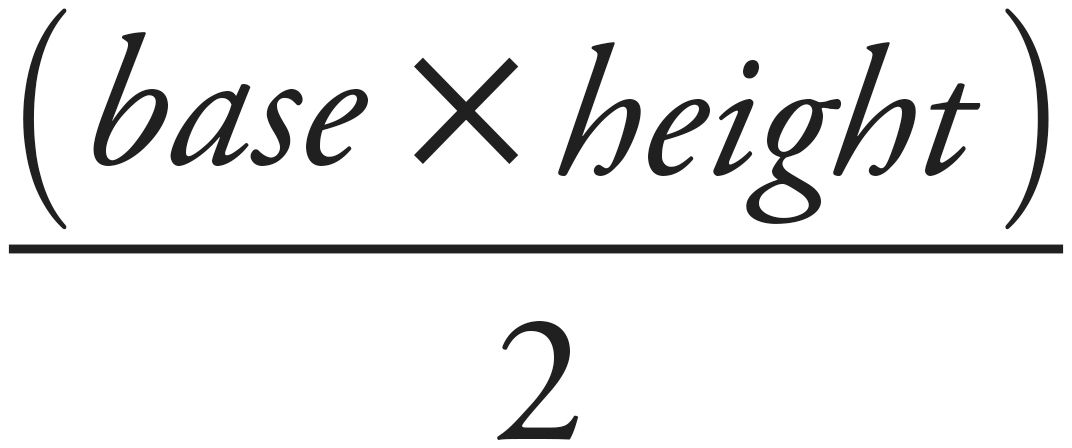Chapter 12
Plane Geometry
The ACT test writers tell us there will be approximately 23 geometry questions on the Math test, 14 of which supposedly cover plane geometry. It’s better, however, to think of the topic breakdown in broader terms rather than these specific numbers. For one thing, many problems incorporate several concepts: You even need algebra to solve many geometry questions, so would the ACT test writers count a question like that in the algebra or plane geometry column?
What matters most is that you can identify the topics that can make a question Now, Later, or Never for you.
While ACT test writers occasionally may throw in a more advanced formula or complex shape, the majority of the questions test the basic rules on the basic shapes. This chapter will review a cross-section of those formulas and concepts and give you a strategic approach to apply those rules on the ACT.
CRACKING THE GEOMETRY ON THE ACT
Plug-and-chug geometry questions can have so much information in them that they feel like word problems. So treat them like word problems. Let’s review the basic approach to word problems. We’ll then add some points specific to geometry.

Step 1: Know the Question
Know the question. Read the whole problem before calculating anything, and underline the actual question.

Step 2: Let the Answers Help
Let the answers help. Look for clues on how to solve and ways to use POE (Process of Elimination).
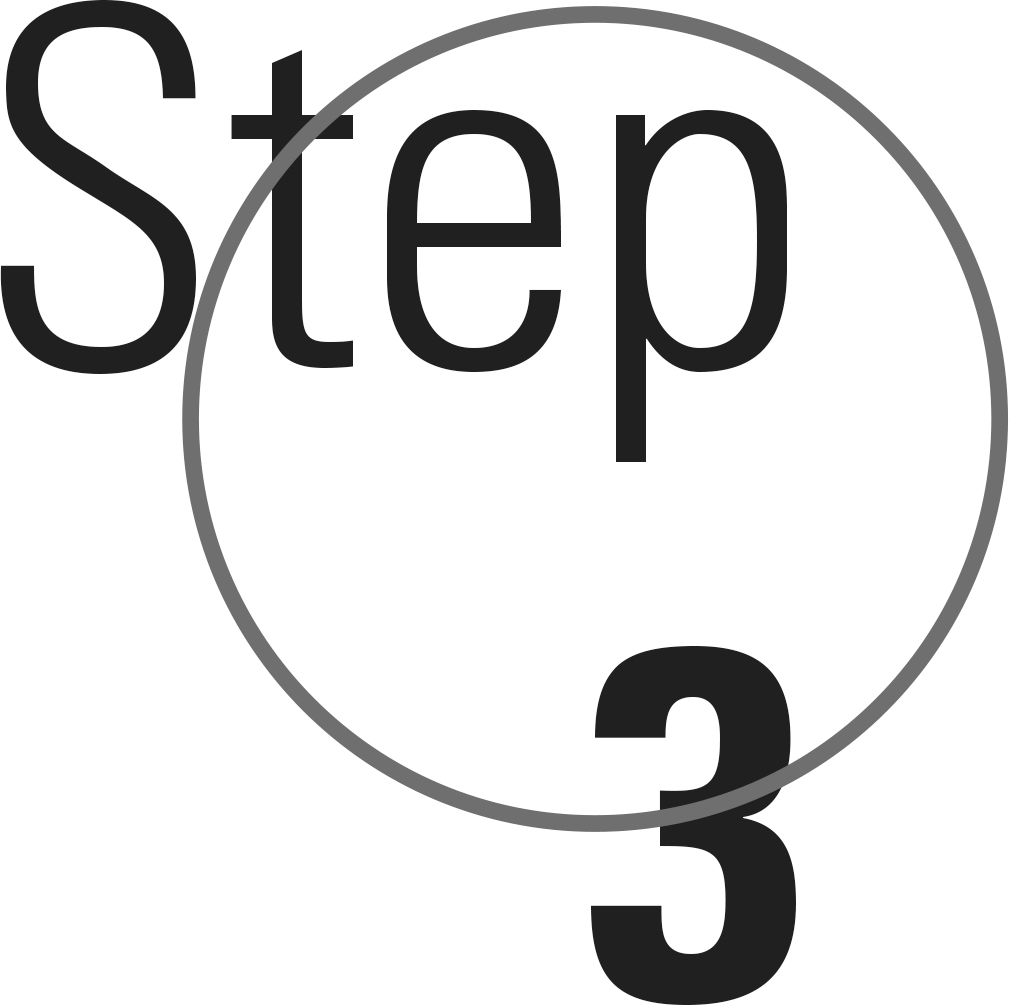
Step 3: Break the Problem into Bite-Sized Pieces
Break the problem into bite-sized pieces. When you read the problem a second time, calculate at each step necessary and watch out for tricky phrasing.
For geometry questions, Step 3 has two specific additions:

Step 3a: Write all the information given in the problem on the figure. If there is no figure, draw your own.
Step 3b: Write down any formulas you need and fill in any information you have.
Geometry BFFs: POE and Ballparking
Step 2 of the basic approach is particularly important to geometry questions. In the last few chapters, we’ve seen how POE and Ballparking can help to narrow down the answer choices when you’re confused. Before you rush to calculate, Ballparking in particular will help you a ton on geometry problems because most figures are drawn to scale.
To Scale or Not to Scale?
That is the question. The ACT makes a big deal in the instructions about the fact that their figures are “NOT necessarily drawn to scale.” Here’s the thing, though: They usually are drawn to scale or at least enough to use them in broad strokes. Use Ballparking to eliminate answers that are too big or too small rather than to determine a precise value. Questions on angles and area especially lend themselves to Ballparking. The main place to be skeptical is on those problems that ask questions like, “Which of the following must be true?” Those are the ones whose figures can be purposely misleading.
In most other cases, if you know how to use the figures that are given (or how to draw your own), you can eliminate several wrong answers before doing any math at all. Let’s see how this works.
How Big Is Angle NLM?

Obviously, you don’t know exactly how big this angle is, but it would be easy to compare it with an angle whose measure you do know exactly. Let’s compare it with a 90° angle.

Angle NLM is clearly a bit less than 90°. Now look at the following problem, which asks about the same angle NLM.

1. In the figure below, O, N, and M are collinear. If the lengths of ON and NL are the same, the measure of angle LON is 30°, and angle LMN is 40°, what is the measure of angle NLM ?
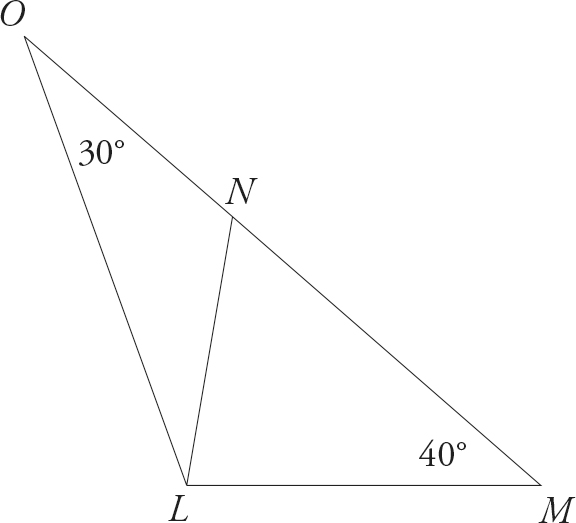
A. 30°
B. 80°
C. 90°
D. 110°
E. 120°
Here’s How to Crack It
Start with Step 1: Know the question. Underline what is the measure of angle NLM ? and even mark the angle on your figure. You don’t want to answer for the wrong angle. Now move to Step 2, and let’s focus on eliminating answer choices that don’t make sense. We’ve already decided that ∠NLM is a little less than 90°, which means we can eliminate (C), (D), and (E). How much less than 90°? 30° is a third of 90°. Could ∠NLM be that small? No way! The answer to this question must be (B).
In this case, it wasn’t necessary to do any “real” geometry at all to get the question right, but it took about half the time. ACT has to give you credit for right answers no matter how you get them. Revenge is sweet. What’s more, if you worked this problem the “real” way, you might have picked one of the other answers: As you can imagine, every answer choice gives some partial answer that you would’ve seen as you worked the problem.

Let’s Do It Again

2. In the figure below, if AB = 27, CD = 20, and the area of triangle ADC = 240, what is the area of polygon ABCD?
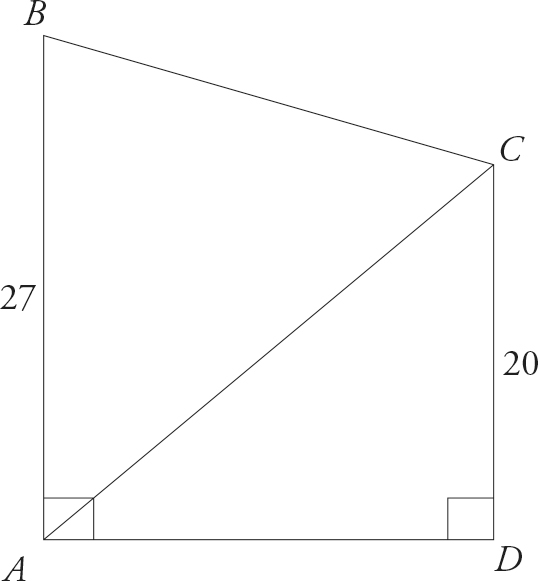
A. 420
B. 480
C. 540
D. 564
E. 1,128
Here’s How to Crack It
Start with Step 1: Know the question. Underline what is the area of polygon ABCD ? This polygon is not a conventional figure, but if we had to choose one figure that the polygon resembled, we might pick a rectangle. Try drawing a line at a right angle from the line segment AB so that it touches point C, thus creating a rectangle. It should look like the following:
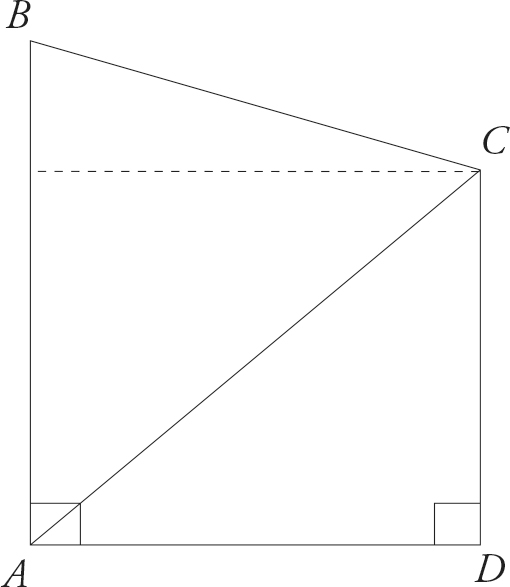
The area of polygon ABCD is equal to the area of the rectangle you’ve just formed, plus a little bit at the top. The problem tells you that the area of triangle ADC is 240. What is the area of the rectangle you just created? If you said 480, you are exactly right, whether you knew the geometric rules that applied or whether you just measured it with your eyes.
So the area of the rectangle is 480. Roughly speaking, then, what should the area of the polygon be? A little more. Let’s look at the answer choices. Choices (F) and (G) are either less than or equal to 480; get rid of them. Choices (H) and (J) both seem possible; they are both a little more than 480; let’s hold on to them. Choice (K) seems pretty crazy. We want more than 480, but 1,128 is ridiculous.
What Should I Do If There Is No Diagram?
Draw one! It’s always easier to understand a problem when you can see it in front of you. If possible, draw your figure to scale so that you can estimate the answer as well.

The answer to this question is (J). To get this final answer, you’ll need to use a variety of area formulas, which we’ll explore later in this chapter. For now, though, notice that your chances of guessing have increased from 20% to 50% with a little bit of quick thinking. Now what should you do? If you know how to do the problem, you do it. If you don’t or if you are running out of time, you guess and move on.
However, even as we move in to the “real” geometry in the remainder of this chapter, don’t forget:
Always look for opportunities to Ballpark on geometry problems even if you know how to do them the “real” way.
GEOMETRY REVIEW
By using the diagrams ACT has so thoughtfully provided, and by making your own diagrams when they are not provided, you can often eliminate several of the answer choices. In some cases, you’ll be able to eliminate every choice but one. Of course, you will also need to know the actual geometry concepts that ACT is testing. We’ve divided our review into the following four topics:
-
Angles and lines
-
Triangles
-
Four-sided figures
-
Circles
ANGLES AND LINES
Here is a line.

A line extends forever in either direction. This line, called l1, has three points on it: A, B, and C. These three points are said to be collinear because they are all on the same line. The piece of the line in between points A and B is called a line segment. ACT will refer to it as segment AB or simply AB. A and B are the endpoints of segment AB.
A line forms an angle of 180°. If that line is cut by another line, it divides that 180° into two pieces that together add up to 180°.
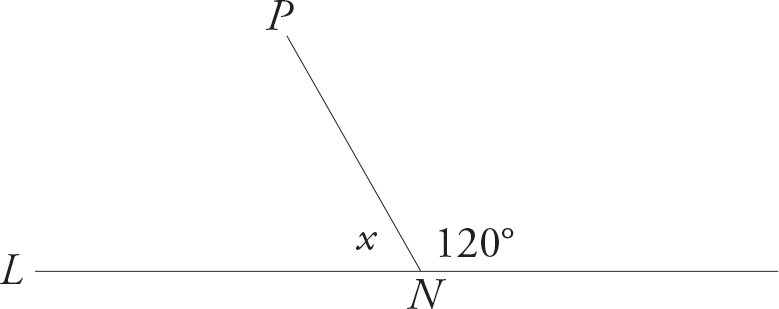
In the above diagram, what is the value of x? If you said 60°, you are correct. To find ∠x, just subtract 120° from 180°.
An angle can also be described by points on the lines that intersect to form the angle and the point of intersection itself, with the middle letter corresponding to the point of intersection. For example, in the previous diagram, ∠x could also be described as ∠LNP. On the ACT, instead of writing out “angle LNP,” they’ll use math shorthand and put ∠LNP instead. So “angle x” becomes ∠x.
If there are 180° above a line, there are also 180° below the line, for a total of 360°.

When two lines intersect, they form four angles, represented below by letters A, B, C, and D. ∠A and ∠B together form a straight line, so they add up to 180°.

Angles that add up to 180° are called supplementary angles. ∠A and ∠C are opposite from each other and always equal each other, as are ∠B and ∠D. Angles like these are called vertical angles.

In the previous figure, what is the value of ∠x? If you said 80°, you’re right. Together with the 100° angle, x forms a straight line. What is the value of ∠y? If you said 80°, you’re right again. These two angles are vertical and must equal each other. The four angles together add up to 360°.
When two lines meet in such a way that 90° angles are formed, the lines are called perpendicular. The little box at the point of intersection of two lines below indicates that they are perpendicular. It stands to reason that all four of these angles have a value of 90°.
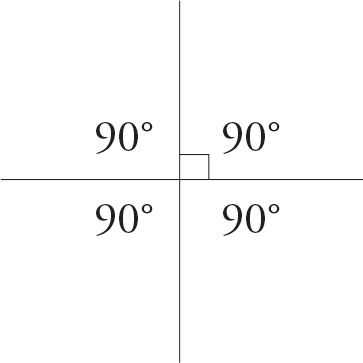
When two lines in the same plane are drawn so that they could extend into infinity without ever meeting, they are called parallel. In the figure below, l1 is parallel to l2. The symbol for parallel is | |.

When two parallel lines are cut by a third line, eight angles are formed, but in fact, there are really only two—a big one and a little one. Look at the diagram below.

If ∠A = 110°, then ∠B must equal 70° (together they form a straight line). ∠D is vertical to ∠B, which means that it must also equal 70°. ∠C is vertical to ∠A, so it must equal 110°.
The four angles ∠E, ∠F, ∠G, and ∠H are in exactly the same proportion as the angles above. The little angles are both 70°. The big angles are both 110°.
Try the following problem.

1. In the figure below, line L is parallel to line M. Line N intersects both L and M, with angles a, b, c, d, e, f, g, and h as shown below. Which of the following lists includes all the angles that are supplementary to ∠a?

A. Angles b, d, f, and h
B. Angles c, e, and g
C. Angles b, d, and c
D. Angles e, f, g, and h
E. Angles d, c, h, and g
Here’s How to Crack It
An angle is supplementary to another angle if the two angles together add up to 180°. Because ∠a is one of the eight angles formed by the intersection of a line with two parallel lines, we know that there are really only two angles: a big one and a little one. ∠a is a big one. Thus, only the small angles would be supplementary to it. Which angles are those? The correct answer is (A). By the way, if you think back to the last chapter and apply what you learned there, could you have Plugged In on this problem? Of course you could have. After all, there are variables in the answer choices. Sometimes it is easier to see the correct answer if you substitute real values for the angles instead of just looking at them as a series of variables. Just because a problem involves geometry doesn’t mean that you can’t Plug In.


TRIANGLES
A triangle is a three-sided figure whose inside angles always add up to 180°. The largest angle of a triangle is always opposite its largest side. Thus, in triangle XYZ below, XY would be the largest side, followed by YZ, followed by XZ. On the ACT, “triangle XYZ” will be written as ΔXYZ.

The ACT likes to ask about certain kinds of triangles in particular.
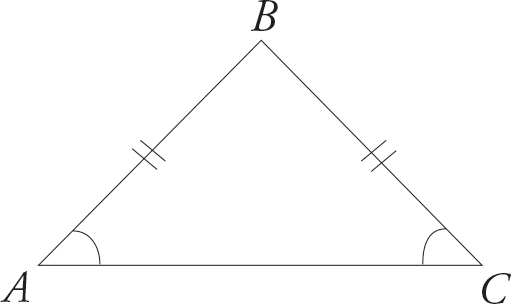
An isosceles triangle has two equal sides. The angles opposite those sides are also equal. In the isosceles triangle above, if ∠A = 50°, then so does ∠C. If AB = 6, then so does BC

An equilateral triangle has three equal sides and three equal angles. Because the three equal angles must add up to 180°, all three angles of an equilateral triangle are always equal to 60°.
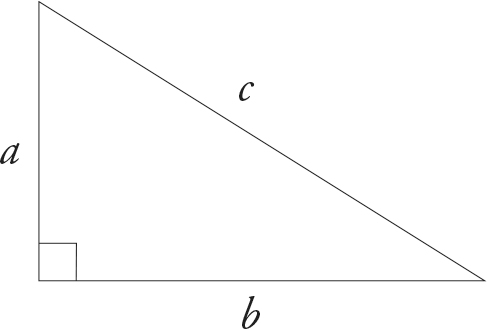
A right triangle has one inside angle that is equal to 90°. The longest side of a right triangle (the one opposite the 90° angle) is called the hypotenuse.
Pythagoras, a Greek mathematician, discovered that the sides of a right triangle are always in a particular proportion, which can be expressed by the formula a2 + b2 = c2, where a and b are the shorter sides of the triangle, and c is the hypotenuse. This formula is called the Pythagorean Theorem.
There are certain right triangles that the test writers at ACT find endlessly fascinating. Let’s test out the Pythagorean theorem on the first of these.
32 + 42 = c2
9 + 16 = 25
c2 = 25, so c = 5
The ACT writers adore the 3-4-5 triangle and use it frequently, along with its multiples, such as the 6-8-10 triangle and the 9-12-15 triangle. Of course, you can always use the Pythagorean theorem to figure out the third side of a right triangle, as long as you have the other two sides, but because ACT problems almost invariably use “triples” like the ones we’ve just mentioned, it makes sense just to memorize them.
The ACT has three commonly used right-triangle triples.
3-4-5 (and its multiples)
5-12-13 (and its multiples)
7-24-25 (not as common as the other two)
Don’t Get Snared
-
Is this a 3-4-5 triangle?

No, because the hypotenuse of a right triangle must be its longest side—the one opposite the 90° angle. In this case, we must use the Pythagorean Theorem to discover side c: 32 + c2 = 16, so c = 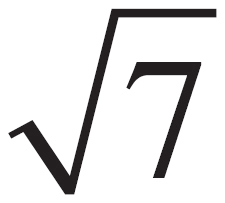 .
.
-
Is this a 5-12-13 triangle?
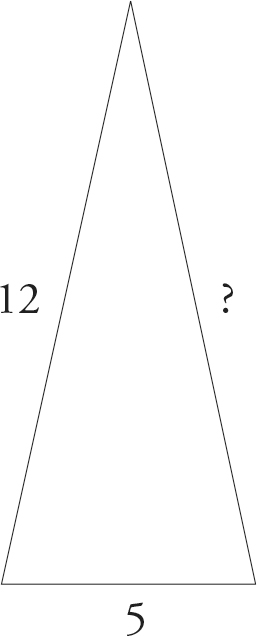
No, because the Pythagorean Theorem—and triples—apply only to right triangles. We can’t determine definitively the third side of this triangle without knowing the specific angle measures.
The Isosceles Right Triangle
As fond as the ACT test writers are of triples, they are even fonder of two other right triangles. The first is called the isosceles right triangle. The sides and angles of the isosceles right triangle are always in a particular proportion.

Be on the Lookout…
for problems in which the application of the Pythagorean Theorem is not obvious. For example, every rectangle contains two right triangles. That means that if you know the length and width of the rectangle, you also know the length of the diagonal, which is the hypotenuse of both triangles created by the diagonal.
You could use the Pythagorean Theorem to prove this (or you could just take our word for it). Whatever the value of the two equal sides of the isosceles right triangle, the hypotenuse is always equal to one of those sides times  . Here are two examples.
. Here are two examples.
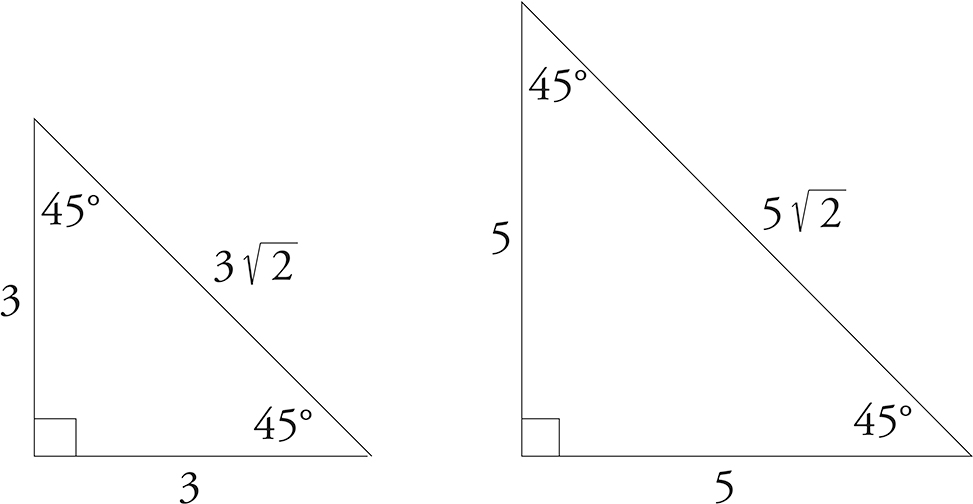
The 30-60-90 Triangle
The other right triangle tested frequently on the ACT is the 30-60-90 triangle, which also always has the same proportions.
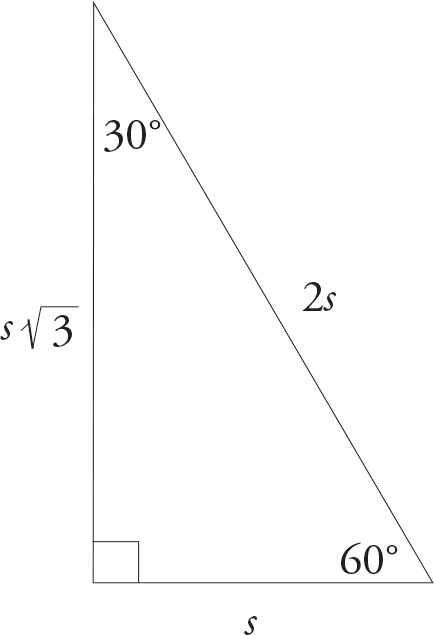
You can use the Pythagorean Theorem to prove this (or you can just take our word for it). Whatever the value of the short side of the 30-60-90 triangle, the hypotenuse is always twice as large. The medium side is always equal to the short side times 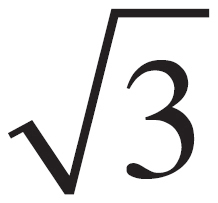 . Here are two examples.
. Here are two examples.

Because these triangles are tested so frequently, it makes sense to memorize the proportions, rather than waste time deriving them each time they appear.
Don’t Get Snared
-
In the isosceles right triangle below, are the sides equal to 3
 ?
?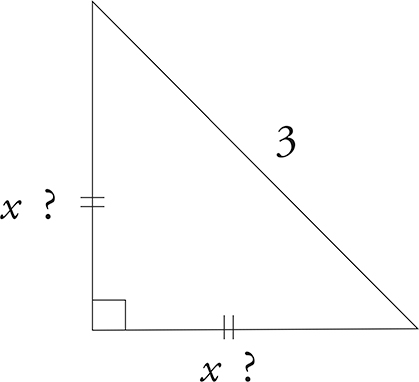
No. Remember, in an isosceles right triangle, hypotenuse = the side  . In this case, 3 = the side
. In this case, 3 = the side  . If we solve for the side, we get
. If we solve for the side, we get 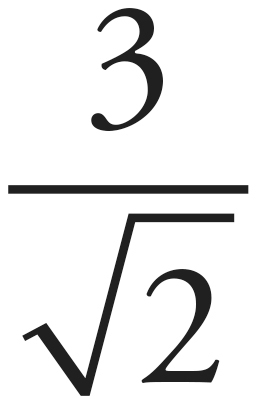 the side.
the side.
For arcane mathematical reasons, we are not supposed to leave a radical in the denominator, but we can multiply top and bottom by  to get
to get  .
.
-
In the right triangle below, is x equal to 4
 ?
?
No. Even though it is one of ACT’s favorites, you have to be careful not to see a 30-60-90 where none exists. In the triangle above, the short side is half of the medium side, not half of the hypotenuse. This is some sort of right triangle all right, but it is not a 30-60-90. The hypotenuse, in case you’re curious, is really 4 .
.
Area
The area of a triangle can be found using the following formula:

Height is measured as the perpendicular distance from the base of the triangle to its highest point.

In all three of the above triangles, the area is
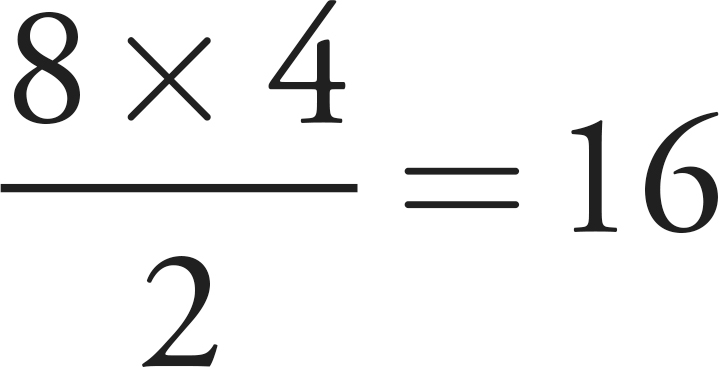
Don’t Get Snared
-
Sometimes the height of a triangle can be outside the triangle itself, as we just saw in the second example.
-
In a right triangle, the height of the triangle can also be one of the sides of the triangle, as we just saw in the third example. However, be careful when finding the area of a non-right triangle. Simply because you know two sides of the triangle does not mean that you have the height of the triangle.
Similar Triangles
Two triangles are called similar if their angles have the same degree measures. This means their sides will be in proportion. For example, the two triangles below are similar.

Because the sides of the two triangles are in the same proportion, you can find the missing side, x, by setting up a proportion equation.

ACT TRIANGLE PROBLEMS
In this chapter, we’ve pretty much given you all the basic triangle information you’ll need to do the triangle problems on the ACT. The trick is that you’ll have to use a lot of this information all at once. Let’s have a look at a typical ACT triangle problem and see how to use the basic approach.
